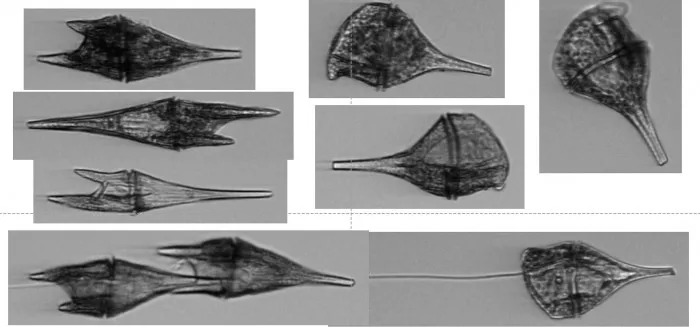Scientists from the Scripps Institute of oceanography at the University of California, San Diego, the J. Craig Venter Institute (JCVI) and the National Oceanic and Atmospheric Administration (NOAA) used genetic research tools similar to those used in genealogical research to assess marine biodiversity off the California coast. The result is a breakthrough technology that researchers will be able to diagnose conditions at the bottom of the marine food web that affect the abundance of commercially important fish or cause harmful algal reproduction.
From the information collected by a method called "metacoding", scientists can also use so-called environmental DNA (Edna) to assess how the oceans effectively protect the earth from climate change.
Dinoflagellates collected during the long-term ecological research cruise of the National Science Foundation (NSF) in 2021
The team reported these findings today (May 4, 2022) in the journal Nature communications. The work was funded by the National Science Foundation (through the California current ecosystem long term ecological research project), the National Oceanic Administration and the Gordon and Betty Moore Foundation.
"This is the future of ecological sampling," said lead author chase James, a graduate student in Scripps Oceanography and a researcher at JCVI. "This study represents the first deployment of this method in the context of long-term ecological sampling. It reveals what you can see when all this hidden diversity is finally revealed.".
A new way to assess the marine microbiome - the collection of micro plants, animals and other organisms living in specific habitats can greatly improve scientists' ability to diagnose the ocean. In this study, researchers were able to use genetic information to determine the most important factors that govern the number and distribution of marine organisms in the outer waters of the California coast. They found that the supply of nutrients can shape the profile of microorganisms in the California current even more than temperature. This conclusion cannot be reached by traditional methods.
James likened this process to scanning the bar codes of all products in grocery stores to obtain their inventory. Andrew Allen, his consultant, launched the NOAA calcofi marine genomics project (ncog) in 2014, starting with water samples collected during the cruise of the iconic calcofi survey, a quarterly plan jointly managed by Scripps since 1949. The samples collected in two liter bottles were filtered, and the filters were frozen and brought back to the laboratory. Then, the scientists analyzed all the DNA they found in these samples, identified all the microorganisms in the samples, and estimated the number of samples of all the identified species in the samples.
This method is an improvement of traditional technology, such as light mirror technology, which can capture common landmark species in seawater, or measure batch indicators, such as how much chlorophyll is in water. Compared with meta coding, these methods only provide general information about what organisms live and where, while meta coding can identify species more accurately and obtain more data with the same effort.
Calcofi was created after the Second World War to help officials and fishery departments understand what caused the sudden collapse of sardine populations on the west coast. The program cruises quarterly at a series of stations along the coast. There, scientists repeated a series of physical and biogeochemical measurements to reveal ecological conditions. Through the investigation, scientists collected a detailed history of the marine environment.
"Interestingly, 70 years ago, calcofi couldn't even imagine that you could sample two liters of seawater and get comprehensive data on marine microbial communities," James said. "But one of the main future goals of this study is to achieve calcofi's original goal of understanding the processes that drive the success and failure of Fisheries in our region. This cutting-edge research may be used to answer the questions of 70 years ago.".

